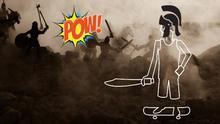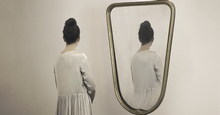Hidden Gold in the Shadow
My younger sister, Carmen, is quite close in age to me—just a year apart—but distant in personality. Growing up, my naturally sensitive, caring, generous sibling would often say to me that I just didn't have that "caregiver gene." She was right. Where Carmen was motivated to generate positive emotions in herself and others, I was fascinated by the dark nether regions of the mind and imagination. Where Carmen naturally trusted and nurtured others' vulnerabilities, I probed the hidden secrets and conflicted natures of myself and others. Carmen became a nurse, got married, and had children. I never married or had children; I went to graduate school and became a research psychologist. In our PMAI® results, the Caregiver is one of Carmen's top three archetypes, and it is the lowest archetype in my profile—every time. The Caregiver archetype is just not a part of my predisposition; it is simply not on my radar. It is an energy and attitude I never really understood.
A little over ten years ago, Carmen was attacked by her ex-husband in a brutal attempted homicide that nearly took her life and left her severely injured and blind (for a few years). When we knew Carmen was going to live, I had an intense and powerful emotional experience in which I felt that I was going to take care of her, that it would present unknown challenges, and that we would be successful. For the three years that I lived with her, awakening in the middle of the night every night to give her pain medications, change the dressings on her wounds, bathe her, feed her, and nurture her, my driving motivation was to provide my sister with at least one person on the planet who would not turn away from her immense suffering. I had a deep conviction that this quality of support and care was a necessary factor in her healing and for her ability to triumph over this tragedy. I knew Carmen had to ultimately choose for herself to create a beautiful life through her suffering, and I wanted to give her every opportunity to do so.
The power of my love and conviction was unshakeable. In those days, I literally folded her into my psyche, held her in my soul, and believed that she would heal and overcome even when she could not believe. I was embodying the archetypal Caregiver and it transformed me. In Carmen's epic struggle to not only survive but to thrive, she was embodying the archetypal Warrior, which happens to be the opposite and complementary archetype to the Caregiver in the PMAI system.
As you might imagine, expressing the Warrior archetype had always come more naturally for me. But I can also see now, with hindsight, that I was channeling my Warrior through the Caregiver. That is, the conviction that fueled my nurturing of my sister was an expression of the Warrior in me.
It is now been over ten years since that dramatic struggle. Carmen is a triumph: independent, wise, a public speaker, a published author, and an entrepreneur. Our bond is unbreakable. Even today, when I take the PMAI assessment, the Caregiver is my lowest archetype. The attitudes and behaviors of this archetype still do not resonate with my identity. And yet, when I look at my Archetype Profile in my report, I smile to myself when I see the Caregiver, settled in the bottom position. It is a nugget of gold in the darker regions of my psyche; a secret superpower that I can call on when I need it. Love heals is the essence and power of the Caregiver. Each archetype has a power specific to it and as we embrace, claim, and lean into the lowest archetype in our profile, we can access its gifts.




.png)














_thumb.png)
_thumb.png)
